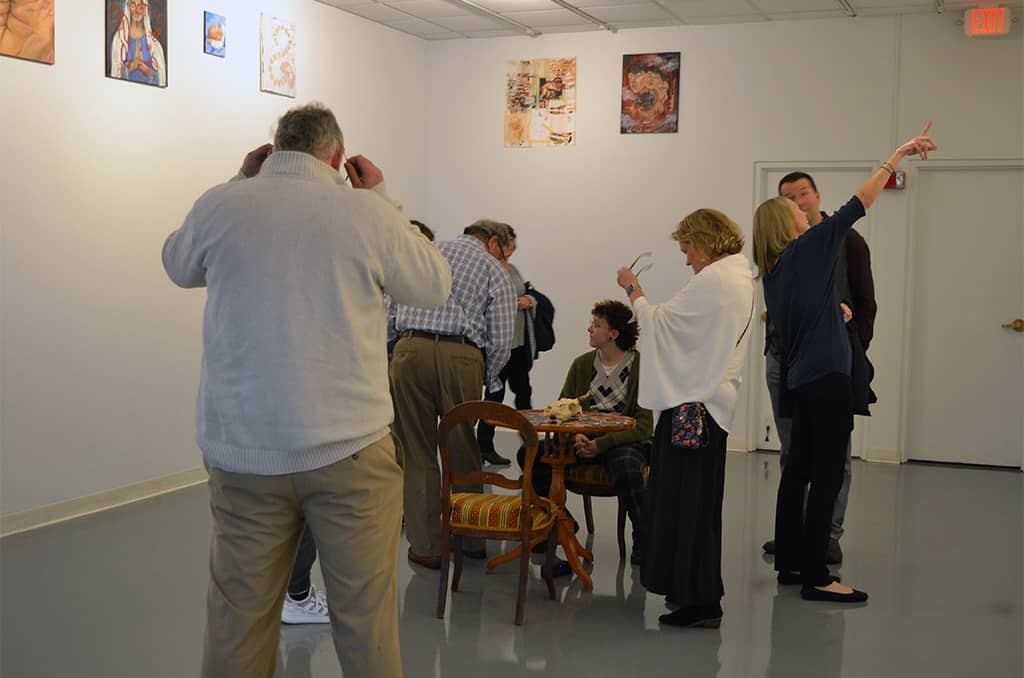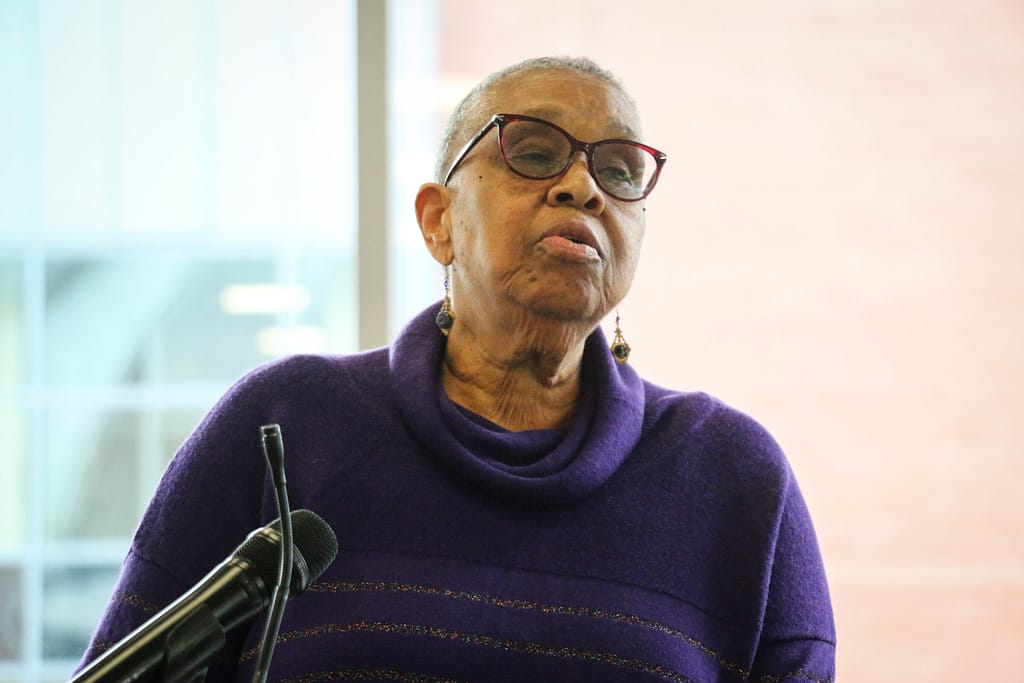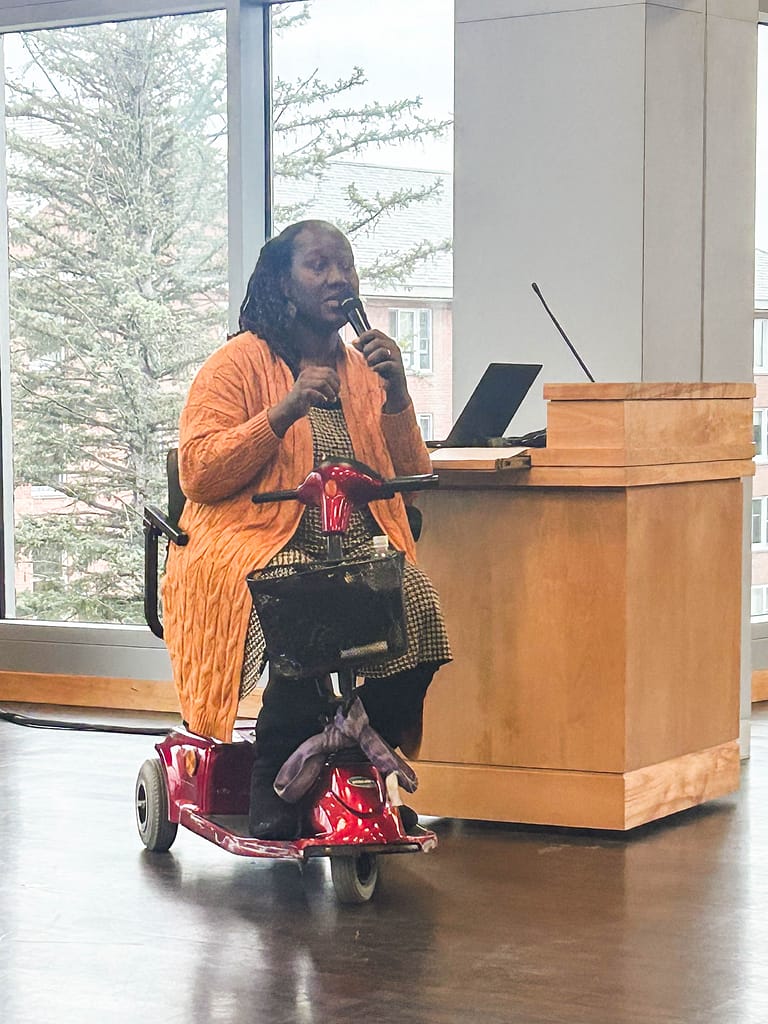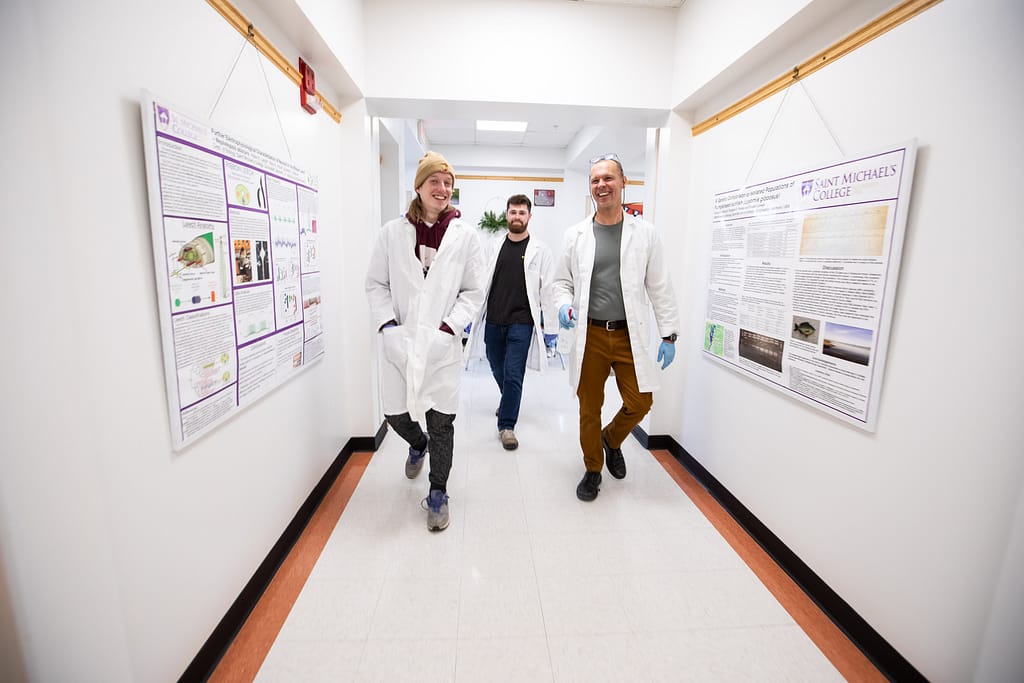Speaker describes how St. Edmund influenced so many souls in his time, and even beyond
Professor Andrew Reeves of Georgia State delivers annual lecture during week of saint's Feast Day; nearly 80 attend, including many students and campus Edmundites
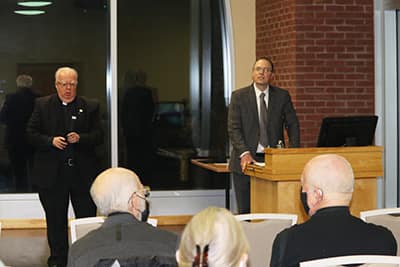
Professor Andrew Reeves delivers Monday’s St. Edmund lecture; Fr. David Theroux, S.S.E., stands to the side after introducing the speaker. (photos by Brother Thomas Berube, S.S.E.)
History Professor Andrew Reeves of Georgia State University helped a large audience at the world’s only Edmundite College understand Monday just how much St. Edmund of Abingdon, namesake of Saint Michael’s College’s founding religious order, influenced the faithful Catholic souls of his times in the early 13th Century and well beyond through his writings.
With animated and engaging enthusiasm for the subject of his scholarship (and helpful PowerPoint slides), Professor Reeves delivered the Annual Saint Edmund Lecture in the Roy Event Room of the Dion Family Student Center late Monday afternoon, Nov. 15 — the day before the actual Feast Day for Saint Edmund on Nov. 16. The audience of nearly 80 people included a large number of students, along with many of the resident Edmundite community and some faculty and members of the public.
Professor Reeves’ impressive and thorough scholarship – precise and carefully documented, sometimes intellectually dense when appropriate, and never condescending — was at times demanding to track with for his less scholarly listeners, yet the speaker helpfully tied it together with clarifying summaries while adding some humorous moments that kept the audience well-engaged.
His topic was “’We firmly believe’: St. Edmund’s Speculum ecclesiae (Mirror of the Church) and its translations in light of the Fourth Lateran Council of 1215.” The massive influence of St. Edmund’s efficient and accessible seminal work explaining the Catholic faith, both as a meditative text and pastoral treatise, was at the core of Monday’s presentation.
Many students in the audience were from religious studies classes taught by Edmundite Fr. David Theroux, S.S.E., who, as director of the Edmundite Center for Faith and Culture on campus, introduced and hosted the speaker. Fr. Theroux said he has worked several years trying to bring the noted scholar of St. Edmund to campus for this lecture.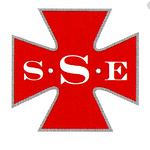
Among the speaker’s interesting personal credentials, Fr. Theroux said in his introduction, was having served in the U.S. Marines. Reeves holds degrees that include a Ph.D. in Medieval Studies, University of Toronto; Master of Arts in Medieval Studies, University of Toronto; and Bachelor of Arts in History and English, University of Texas at Austin. His book is Religious Education in Thirteenth-Century England: The Creed and Articles of Faith.
St. Edmund of Abingdon (also known as St. Edmund of Canterbury, who lived 1174-1240), was an English-born prelate who served as Archbishop of Canterbury. He became a respected lecturer in mathematics, dialectics and theology at the Universities of Paris and Oxford, promoting the study of Aristotle. After his death, his remains were taken back to Pontigny Abbey in France, site of the much-later founding of the Society of St. Edmund in the 19th Century — but because of that association, the Society formed to keep St. Edmund’s memory and life alive through faithful service and for the work of popular missions (including founding Saint Michael’s College years later).
Reeves covered a lot of territory in his presentation of slightly more than an hour, including a brief question-answer session after, but some of main points came together well in a summary near the end:
“The various redactions of the Speculum all show us that a guide to living out one’s religious vocation could not only involve quiet meditation, but also aid for pastors working in the cure of souls and laypeople seeking a deeper religious life,” he said. “The same devotion that would have driven St. Edmund’s personal acts of asceticism and as an archbishop would have made him a peacemaker also gave his contemporaries a work to aid them as pastors.”
A key early point Reeves made was that, while the Catholic Church’s Fourth Lateran Council in 1215 surely can be linked to a wave of moral reforms associated with those times, just as surely an influence, his research suggests, were Edmund and his distinguished intellectual circle who attended the council with a reform-minded zeal that formed before the actual gathering.
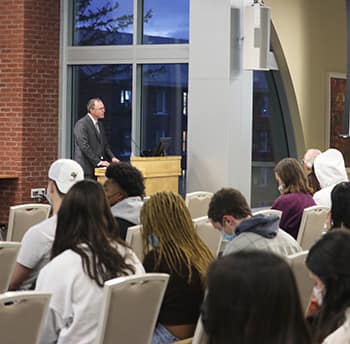
Many students attended Monday’s lecture.
The Council emphasized, more than ever before, the need for confession, and suddenly priests needed to serve a much-expanded role as confessors versed in moral theology and canon law; thus, they needed something to train or guide them in that. Hence, works known as pastoralia — “those texts designed to aid a priest in carrying out the cure of souls”– resulted in great number, including Edmund’s work.
Edmund’s Speculum, Reeves said, was “at the headwaters of the flood of pastoralia to emerge over the 13th century,” ,further ensuring lay participation in church life as part of a larger movement in Western Christendom beyond just Rome’s directives.
Reeves late spoke of Edmund’s Speculum and its nature as a meditative text…”to help the reader know and experience God…” Yet, in it, Edmund “poses the rhetorical question of how a layperson or illiterate can learn Scriptures. He answers that “what can be written can also be orally pronounced and expounded,” and sermons by well-trained priests might facilitate this.
Reeves spoke later in his talk of how, in Edmund’s time, “moral theologians began thinking of faith in terms of a set of articles of faith” and Speculum stands in this trend. He explained the interesting question of how pastoral literature such as Edmund’s work ended up in the hands first of parish priests – he said it was essentially through the “paperbacks” of those times, unbound parchment notebooks that became popular. He spent some time with diagrams showing how Speculum likely informed another major work of the time, Robert Grossetese’s Templum Dei, and not the other way around – advantage, Edmund, in terms of notable influence.
Edmund’s work ended up heavily influencing the pastoral program of the English episcopate, Reeves said. It served as inspiration for pastoral literature and was translated in the mid-13th century into the dialect of French spoken by England’s aristocracy called Anglo-Norman (Mirour de Deinte Eglyse). The Mirour became an instructional text for lay elites he said, and would have served for laypeople’s instruction. He showed examples of the different writing styles in the version directed at lay people versus the one directed more at religious. The way it got into lay reader’s hands was through a blossoming commercial book trade that grew up alongside England’s universities, he said, and thus it reached various audiences. He said the Mirour had a “further afterlife since the lay redaction was eventually back-translated into Latin in the fourteenth Century as the Speculum ecclesia, now an explicitly pastoral and catechetical work. It likewise received a translation into Middle English.”
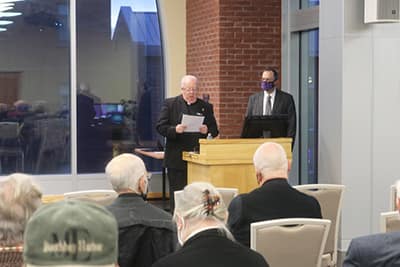
Fr. David Theroux, S.S.E., director of the Edmundite Center for Faith and Culture, introduces Monday’s speaker.
Questions from the audience after the talk included from an Edmundite about its use by priests. Edmundite Graduate Fellow Jolivette Anderson-Douoning wondered how the church-state dynamics of Edmund’s times possibly gave insights into modern American society, if they did; Reeves offered some thoughts about how sometimes the bishops in England during Edmund’s time worked with the secular authorities, while at other times more in opposition to them depending on the circumstances.
Mass for the Feast of St. Edmund was at 4:30 p.m. in the Chapel of Saint Michael the Archangel on Tuesday, with Edmundite Fr. Richard Myhalyk, S.S.E., normally posted at Enders Island in Mystic, CT, preaching about St. Edmund and how he can relate to present times. Fr. Myhalyk borrowed words from previous homilies on the Feast by his brother Edmundites, saying at the beginning, “Before I’m finished and the Edmundites are complete, I want to revisit some past homilies.” He quoted from past homilies by Fr. Joe Waite, one by himself from 2003 that quoted the words of several rappers to resonate with younger listeners, Fr. David Cray (the current Edmundite superior general); Fr. David Theroux, local superior on campus, and the late Fr. Paul McQuillen while also referencing the late Fr. Mike Cronogue, Fr. Ray Doherty and Fr. Roger LaCharite. Read the full text of Fr. Myhalyk’s St. Edmund Feast homily here.
